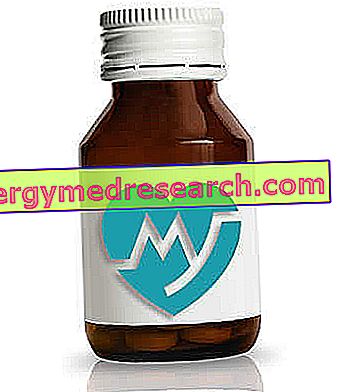
What is NEVANAC?
NEVANAC is a yellow suspension (eye drops) that contains the active ingredient nepafenac.
What is NEVANAC used for?
NEVANAC is used for the prevention and treatment of pain and inflammation that can
arise after surgery to remove a cataract from the eye.
The medicine can only be obtained with a prescription.
How is NEVANAC used?
The dose of NEVANAC is a drop in the affected eye (s) three times a day, starting from the day before the cataract surgery. Treatment is continued for two or three weeks after the operation. An additional drop should be administered between 30 and 120 minutes before the start of the operation. If other eye medicines are also used, an interval of at least five minutes should be observed between the administration of one medicine and another.
How does NEVANAC work?
The active substance in NEVANAC, nepafenac, is a "prodrug" of amfenac. This means that it is converted to amfenac in the eye. Amfenac is a non-steroidal anti-inflammatory drug (NSAID).
It works by blocking an enzyme called cyclooxygenase that produces prostaglandins, substances involved in the inflammatory process. By reducing the production of prostaglandins in the eye, NEVANAC is able to reduce inflammation and pain caused by eye surgery.
What studies have been carried out on NEVANAC?
The effects of NEVANAC were first tested in experimental models before being studied in humans. The efficacy of NEVANAC was tested in four main studies involving a total of 1 201 patients undergoing cataract surgery. One study compared used NEVANAC once, twice or three times a day with placebo (fake eye drops) in 220 patients. The other three studies, out of a total of 981 patients, compared NEVANAC used three times a day with placebo, with ketorolac eye drops (another NSAID) or with both placebo and ketorolac. The main measure of effectiveness was alternatively the percentage of patients in whom the treatment had had the desired effect (without or with few signs of inflammation of the eye) or the percentage of patients in whom the treatment had not had the expected outcome (with signs of moderate or severe inflammation of the eye). These percentages were measured two weeks after the operation.
What benefit has NEVANAC shown during the studies?
NEVANAC demonstrated superior efficacy to that of placebo and equivalent to that of ketorolac in reducing the signs of inflammation. In the study comparing different doses, patients who used NEVANAC three times a day had the lowest treatment failure rate. When NEVANAC was compared with placebo, about 70% of patients who used NEVANAC showed no signs of inflammation after two weeks, compared with between 17% and 59% of those using placebo. In the study comparing NEVANAC with ketorolac, approximately 65% of both groups of patients showed no signs or showed few signs of inflammation.
What is the risk associated with NEVANAC?
The most common side effects of NEVANAC (observed in a number between 1 and 10 patients in 100) are headache, punctate keratitis (spots from inflammation of the cornea, the transparent layer in front of the pupil), pain in the eye, blurred vision, itching of the eye, dryness of the eye, foreign body sensation in the eyes and scab formation on the edge of the eyelid.
Similar side effects were observed in patients using placebo or ketorolac eye drops. For the full list of all side effects reported with NEVANAC, see the Package Leaflet.
NEVANAC should not be used in people who may be hypersensitive (allergic) to nepafenac, to any of the other components or to other NSAIDs. Like other NSAIDs, NEVANAC should not be used in patients who have previously had an attack of asthma, hives or inflammation of the nasal passages when they have taken aspirin or other NSAIDs. NEVANAC contains benzalkonium chloride, which causes discoloration of soft contact lenses. Therefore, people who wear soft contact lenses should be careful.
Why has NEVANAC been approved?
The Committee for Medicinal Products for Human Use (CHMP) has determined that the benefits of NEVANAC outweigh its risks for the prevention and treatment of postoperative pain and inflammation associated with cataract surgery. The Committee recommended that NEVANAC be given marketing authorization.
More information on NEVANAC:
On 11 December 2007, the European Commission granted a marketing authorization valid throughout the European Union for NEVANAC to Alcon Laboratories (UK) Ltd.
The full EPAR for NEVANAC can be found here.
Last update of this summary: 11-2007



